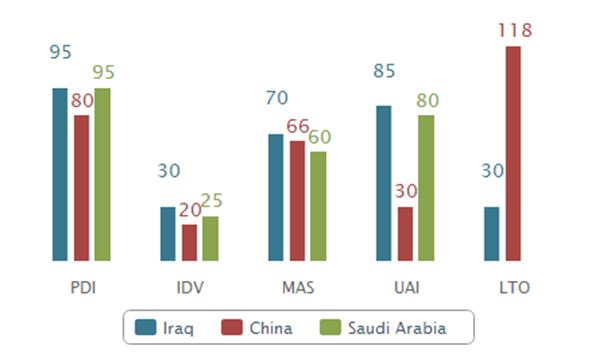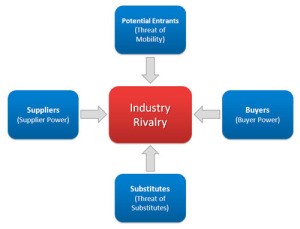The Importance of Effective Cross-Cultural Communication in Business Today
Currently, globalization of business, international expansion of market and rising competitiveness has increased the interdependence of business. With the expansion of business into multiple countries, sensitivity towards the cultural differences has also augmented in the corporate environment. Global interdependence of economy has forced the business owners to provide ample opportunities of cross cultural communication to their managers. It would help in gaining skills and expertise in handling the problems of cultural differences in their organizations (Okoro, 2013). Moreover the international expansion strategies partnership arrangements like mergers, acquisitions and strategic alliances has augmented the importance of effective cross cultural communication in the business world. In highly competitive market and international scope of business, communication is considered to be the vital function in the success of business. Organizational profitability is evaluated by its communication strategies. Cultural barriers have played significant role in hindering the success process of communication in international businesses. Communication process between culturally different people has unleashed the issues of language, values, ways of thinking and religion. Mishandling of these issues would increase the chances of miscommunication (Guang & Trotter, 2012). The objective of this essay is to explain the reasons behind the importance of cross cultural communication which is followed by the explanation of problems and issues hampering the effective communication system. It would also provide the strategic approaches employed by companies to resolve the issues. In the end, organization successfully handling the cultural problems will be compared with the organization failed to cope with the problems of cross-cultural communication.
Various sources have consulted to explain the reasons that why cross cultural communication has become highly important in business today. Literature explained that high pace of globalization has made the cross cultural communication inevitable for businesses. Homogenization of markets has faded the distinctions of national markets. Along with the business development cultural differences between nations, regions and ethnic groups have become stronger. In this situation solution to overcome the cultural problems are presented to smooth the process of communication and interaction between business partners, companies, customers and coworkers (Tian & Borges, 2011). Advertising messages also hold the values, norms and cultural characteristics of different regions. Realizing the importance of cultural factors in advertising messages is very practically and financially very important for business communication As product sales are largely dependent on these advertising messages (Guang & Trotter, 2012).. Cultural values also affect the process of business negotiations and decision making process. In partnership agreements and business transactions business representatives from different countries different cultures has increased the importance of effective cross cultural communication in businesses (Peleckis, 2013) . Moreover, in multinational organizations culturally different workforce has increased the importance of effective communication for successful business operations. Management training programs are organized globally to deal with the issues of workforce diversity. These cross cultural differences have changed the organizational culture. Management styles, communication systems and motivational strategies in the organizations are modified and transformed to ensure the success of organizations (Arseculeratne & Yazdanifard, 2013).
Business students and businesses should be aware of the numerous issues regarding the importance of cross-cultural communication in business productivity and goal achievement. Three of the issues or problems are workforce diversity, cultural impact on advertising and business negotiations. Different management styles of culturally different managers and employees are one of the major issues hindering the productivity and business goals of businesses. It enhances the likelihood of miscommunication, misrepresentation and misunderstanding between the managers and employees. This miscommunication because of different national cultures and ethnic backgrounds affect the operations and productivity of the businesses. Increased emphasis on workforce diversity has made the communication system from culturally different people highly difficult (Okoro, 2013). Another issue rose by culture difference is marketing and advertising of business products and services. Culture differences affect the effectiveness of advertising messages in business environment. Different languages, different buying habits, and consumption styles of consumers from different cultures influence the marketing decisions and business decision of organizations. Moreover, market entering strategies of business are also affected by the purchase behaviors and consumptions styles of target market (Guang & Trotter, 2012). Cultural differences at organizational level affect the business negotiations, partnership agreements and strategic alliances in the global economy. In process of business negotiations, different cultures, different regions and different ethnic backgrounds largely influence the business transactions and partnership agreements. Mishandling of cultural issue and cultural insensitivity would lead to deadlock in negotiation process. In a negotiation process, representatives of high-context culture and low context culture would hamper the harmony of business transactions (Mengyu & Li, 2013).
Businesses can apply a range of strategies or approaches to overcome cross-cultural communication problems. Three strategies required by the organizations to handle these cultural problems in business environment are training sessions, cross cultural programs and enculturation strategies to equip management with the proper understanding of cultural differences. In order to resolve the problem of workforce diversity and develop mutually beneficial relationship between the employees, organizations and management organize training sessions. These training sessions would help in enhancing the managerial proficiency and operational effectiveness of organizations. Training would help in enhancing the cultural sensitivity of managers which ensure the effective intercultural communication (Okoro, 2013). Intercultural programs organized by the management would help to overcome the cultural differences of workforce. Successful implementation of these strategies would help to develop strong competitive advantage (Okoro, 2012).

Understanding of cultural differences and incorporating these cultural aspects in the advertising messages would help in smoothing the process of business communication between customer and the company. Representation of cultural values and cultural norms in the marketing messages would boost the products sales of the company. Moreover training provided to marketing representatives would help in realizing the importance of cultural factors in their marketing campaigns. These systematic strategies to smooth-line the communication system between company and customer help in increasing the profitability of businesses (Guang & Trotter, 2012). To enhance the effectiveness of international negotiations, managers and business representatives should be properly prepared to adapt according to cultural diversity. Enculturation strategies in the management and business representatives would help to ensure the success of international negotiations in partnership agreements. International managers should be properly educated and furnished with proper knowledge and skills to handle the culturally complex situations in business negotiations (Okoro, 2013).
Cross-Cultural Communication Problems
Many businesses have been successful in dealing with cross-cultural communication problems, while others have not shared this success. Successful organization is Volvo Construction Equipment with its acquisition Samsung Heavy Industry’s division while the company which has completely failed in integrating two diverse cultures is BenQ, a Taiwanese company which acquired Siemens. Reasons behind the successful integration of cultural strategies at post acquisition level in Volvo Construction Equipment helps in ensuring the success of acquisitions. New human resource management policy was implemented which completely changed and modified the formal and informal structures of the combined organization. It provided equal opportunity for both companies culturally different to equally participate in workforce and devise organizational structure. Variety of in house training programs and career development programs has equipped the Korean employees of Samsung Heavy Industry with necessary skills and competencies. It helped them to progress in combined organization at higher levels in the hierarchy. Increased stress on the team work facilitated in integrating strengths, concepts and skills of two different cultures (Lee et al., 2014). International education programs at education level enhanced the cultural sensitivity and positive results of these programs exhibited that it enhanced the quality, experience and adaptability towards different cultures (Brydon & Liddell, 2012). BenQ failed to integrate two culturally different organizations because of inefficient allocation of time and resources for integrating and assimilating the culturally diverse organizations. Ineffective communication system, absence of clearly defined objectives and performance expectations lead to the failure BenQ after acquiring Siemens (Cheng & Seeger, 2012).
In conclusion, homogenization of markets, globalization of businesses and increased workforce diversity has augmented the importance of effective cross cultural communication in business world. Increased cultural integration has emerged the issues of workforce diversity in employees and cultural effect on advertising and negotiation processes. Different cultural norms, values and different ethnic backgrounds have increased the problems of miscommunication, misrepresentation and misunderstandings. It affects the profitability, productivity and operational effectiveness of the businesses. These problems of cultural miscommunication could be handled by training programs, cross cultural education programs and introduction of enculturation strategies in the corporate environment. It would help in understanding and realizing the importance of cultural differences to ensure the success of advertising messages, business negotiations and business transactions. Volvo Construction Equipment successfully integrated the culturally different organizations by introducing new human resource management policies. While in comparison BenQ failed to integrate two culturally different organizations because of inefficient allocation of time and resources for integrating and assimilating the culturally diverse organizations. In my opinion, development in international business and global trade importance of cross cultural communication has increased. To fully capitalize on the benefits of international markets and diverse workforce, business organizations need to devise comprehensive strategies of cultural education. Cultural educations programs, in-house trainings would enhance the cultural adaptability of employees and ensure the integration of culturally different organizations in mergers and acquisitions.
References
Arseculeratne, D. & Yazdanifard, R., 2013. Barriers to Cross Cultural Communication and the steps needed to be taken for a MNC to Succeed in the Global Market.
Brydon, K. & Liddell, M., 2012. Supporting international students undertaking Australian university studies. Social Work Education , 31(8), pp.995-1011.
Cheng, S.S. & Seeger, M.W., 2012. Cultural Differences and Communication Issues in International Mergers and Acquisitions: A Case Study of BenQ Debacle. International Journal of Business & Social Science, 3(3), pp.116-27.
Guang, T. & Trotter, D., 2012. Key issues in cross-cultural business communication: Anthropological approaches to international business. African Journal of Business Management , 6(22), pp. 6456-6464.
Lee, S.-J., Kim, J. & Park, B.I., 2014. Culture clashes in cross-border mergers and acquisitions: A case study of Sweden’s Volvo and South Korea’s Samsung. International Business Review.
Mengyu, P. & Li, C., 2013. Research on the Effects of Culture Differences on Business Communication Between China and U.S.- ACase Study of Cross-cultural Management of Joint Venture Enterprise in China. Universal Journal of Management and Social Sciences, 3(9), pp.45-50.
Okoro, E., 2012. Cross-cultural etiquette and communication in global business: Toward a strategic framework for managing corporate expansion. International Journal of Business and Management , 7(16), pp.130-38.
Okoro, E., 2013. International Organizations and Operations: An Analysis of Cross-Cultural Communication Effectiveness and Management Orientation. Journal of Business & Management (COES&RJ-JBM), 1(1).
Peleckis, K., 2013. International Business Negotiations: Culture, Dimensions, Context. International Journal of Business, Humanities and Technology, Lituânia.
Tian, K. & Borges, L., 2011. Cross-cultural issues in marketing communications: An anthropological perspective of international business. International Journal of China Marketing, 2(1), pp.110-26.





